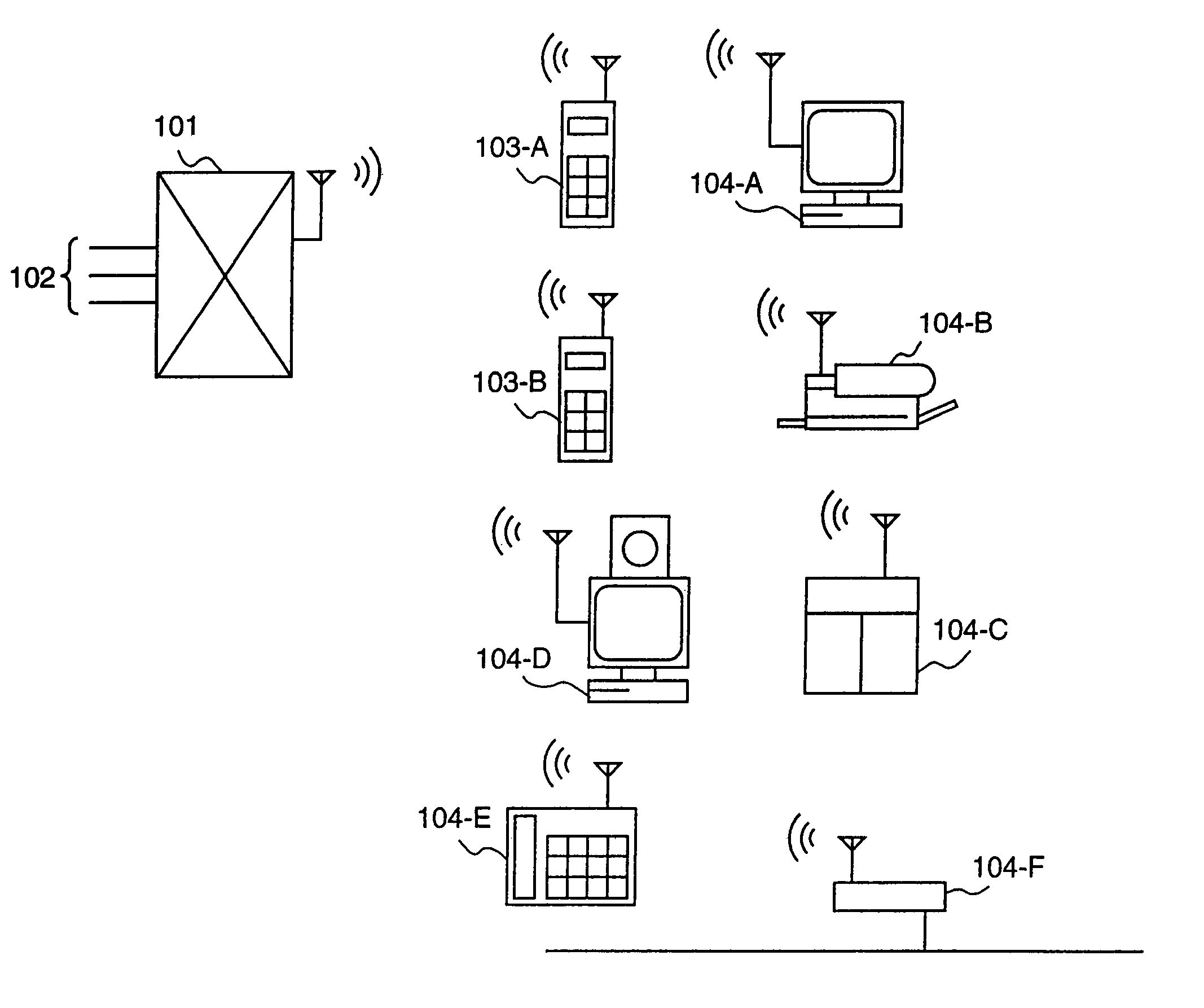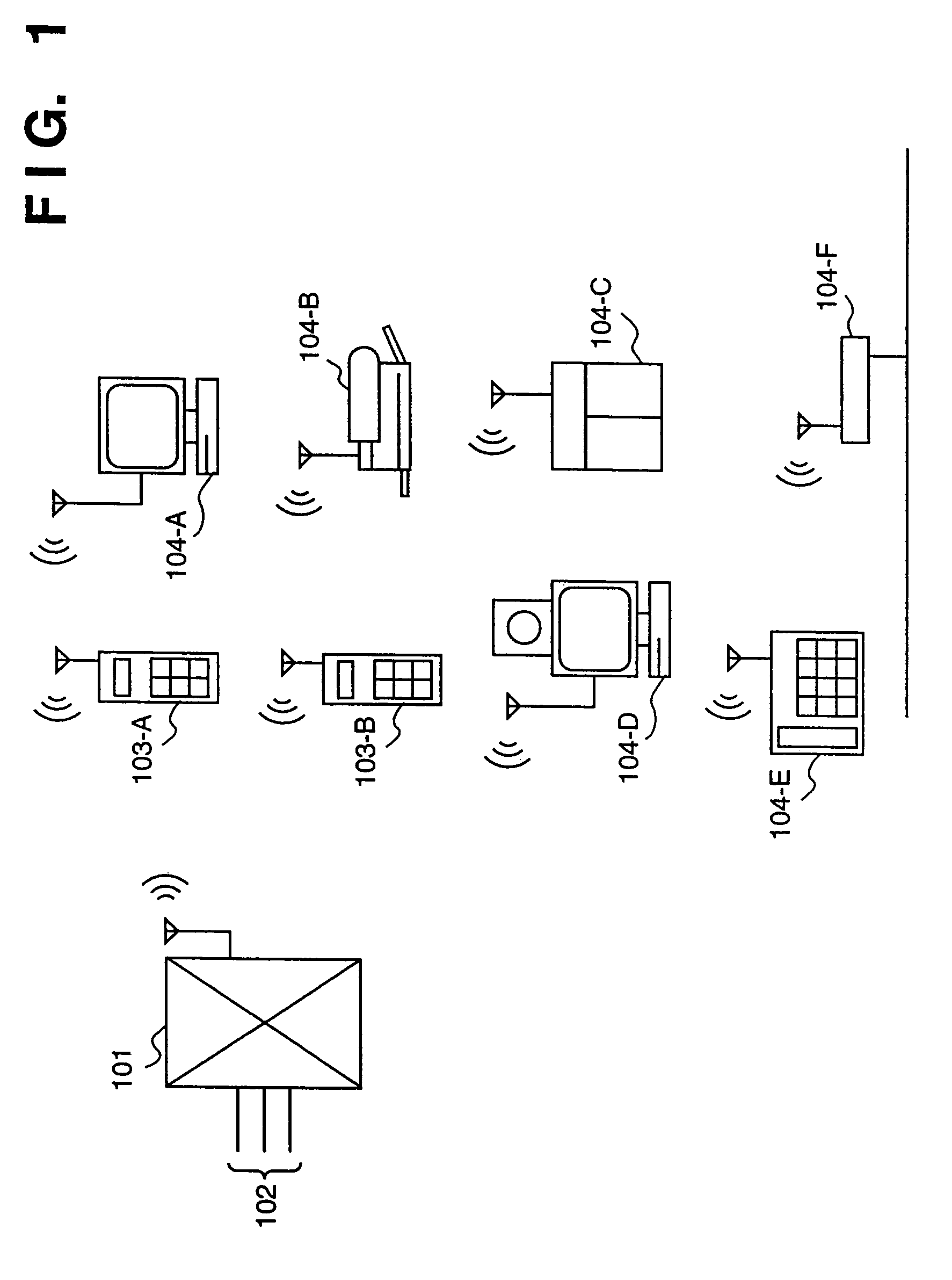Wireless communication system and method of controlling same
a communication system and wireless technology, applied in the field of wireless communication system, can solve the problems of limiting the transmission rate, limiting the number of connecting devices that can be accommodated by the main unit, and limiting the number of wireless telephones
- Summary
- Abstract
- Description
- Claims
- Application Information
AI Technical Summary
Benefits of technology
Problems solved by technology
Method used
Image
Examples
first embodiment
[0086][First Embodiment]
[0087]One type of digital wireless communication that has become the focus of attention in recent years is spread-spectrum communication. In spread-spectrum communication, the information transmitted is spread over a wide bandwidth. This provides the advantages of improved interference avoidance and security. At the present time, frequencies in the 2.4 GHz band have been allocated for spread-spectrum communication in various countries and the use of spread-spectrum communication is growing world-wide.
[0088]Spread-spectrum communication is broadly divided into frequency hopping (FH) and direct sequence (DS). In FH, transmission using a wide band is performed by changing the modulating frequency within a fixed period of time. In DS, a wide band is used by spreading and modulating the information for transmission using a pseudo-noise code having a rate which is ten times to several hundred times the rate of the information.
[0089]In this embodiment, a case will b...
second embodiment
[0269][Second Embodiment]
[0270]A second embodiment of the invention will now be described. Since the architecture of the wireless communication system according to this embodiment and the construction of the terminals, etc. constituting the system are similar to those of the system according to the first embodiment described above, these need not be illustrated or described again.
[0271]Here will be described processing for terminating a call on an outside line at the time of communication between extensions.
[0272]In the first embodiment, outside-line processing is performed separately of extension processing in regard to processing executed when an incoming call to a wireless telephone is terminated and processing executed when there is a call between extensions. However, in a case where a call is terminated on an outside line during an extension call, an incoming-call display is presented on the display unit 413 of the wireless telephone 3. To accomplish this, third communication m...
third embodiment
[0283][Third Embodiment]
[0284]In the first and second embodiments, a low-speed frequency hopping method is used. However, effects similar to those of these embodiments can be expected even if the direct sequence method is used. This can be realized by using the direct sequence method in the connecting device 2 of the main unit, the wireless telephone 3 and the wireless portion of the wireless adapter 4 of the system illustrated in FIG. 2.
[0285]FIG. 31 shows an example of a communication procedure for a case in which the direct sequence method is used. First, communication is divided between a main-unit transmission frame and a slave transmission frame along the time axis. In other words, the main-unit transmission frame and the slave transmission frame are sent in alternating fashion.
[0286]FIG. 32 is a diagram showing an example of the frame transmitted by the main unit. This frame has control information and time slots for each of the wireless terminals. In FIG. 32, FSYN represents...
PUM
 Login to View More
Login to View More Abstract
Description
Claims
Application Information
 Login to View More
Login to View More - R&D
- Intellectual Property
- Life Sciences
- Materials
- Tech Scout
- Unparalleled Data Quality
- Higher Quality Content
- 60% Fewer Hallucinations
Browse by: Latest US Patents, China's latest patents, Technical Efficacy Thesaurus, Application Domain, Technology Topic, Popular Technical Reports.
© 2025 PatSnap. All rights reserved.Legal|Privacy policy|Modern Slavery Act Transparency Statement|Sitemap|About US| Contact US: help@patsnap.com



